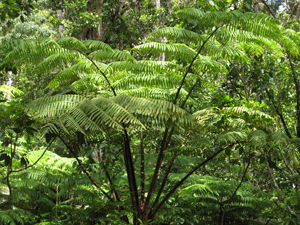I study how human activities alter plant communities and resultant ecosystem function at both modern and paleoecological timescales. My data sources include modern and historical vegetation surveys, plant traits, biogeochemical analyses, and paleoecological data gathered from sediment cores.
Species invasions
Invasion of exotic species is often considered one of the greatest threats to communities and ecosystems. Native invaders – those native species that have recently invaded a particular community, or species that were present that increase substantially in abundance – may also impact ecosystems. In one of my current projects I am investigating the impacts of native and exotic invasive wetland species on plant communities in an Indiana Dunes wetland complex (Amatangelo et al. in prep).
Long-term community change
Many ecological responses take decades or longer to unfold, and are often outside the scope of traditional ecological inquiry. I have investigated the long term patterns and drivers of community change in temperate forests and wetlands in the Midwest. In Wisconsin, I used a forest understory data set spanning 50 years to show that similar management practices have led to variable community changes across an edaphic gradient in northern Wisconsin (Amatangelo et al 2011).
One difficulty modern ecologists have in interpreting past and predicting future trends from even ‘long’ datasets is that many ecological processes take more time to fully unfold. Paleoecological data is invaluable for understanding how communities changed both before humans and on more recent timescales. In my current postdoctoral project I have been using a combination of plant macrofossil and modern data to evaluate community changes over 300 years in the wetlands of Indiana Dunes National Lakeshore. Macrofossil samples allow us to extend a 30-year “traditional” community record to include the period in which European settlers altered the lanscape.
Functional traits and diversity
Biodiversity-ecosystem function research has moved past its origins of focus on species richness to alternative diversity measurements such as phylogenetic and trait-based diversity. With collegues from the University of Wisconsin-Madision I have been investigating how the diversity and distribution of traits in Wiscosnin forests has changed over 50 years, allowing us to elucidate potential ecosystem impacts of forest community changes. This research was presented at ESA in 2011 and manuscripts are currently in preparation.
My dissertation research focused on understanding how plant and microbial diversity relate to decomposition, nutrient release, and soil formation in Hawaii. Hawaii has a large number of endemic fern species that are susceptible to replacement by non-native angiosperms. Hawaiian ferns, particularly those in lineages that evolved prior to angiosperm diversification, have unique phisiological and biochemical traits that are significant for nutrient cycling (Funk and Amatangelo 2013; Amatangelo and Vitousek 2008, 2009; Stewart et al. 2011). Thus, it is not simply the number of species but also the phylogenetic composition of those species that is important for the function of Hawaiian ecosystems.
